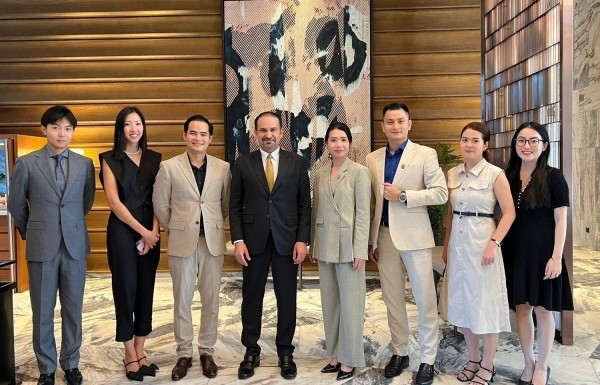Industrial property boom right on cue
Industrial property boom right on cue
New industrial property projects will come online just as foreign investors relocating due to the US-China trade war will boost demand in Vietnam.

According to Nguyen Thi Thanh Huong, general director of Dai Phuc Land, as the trade war with the US escalates, many investors are withdrawing from China to neighbouring countries like Vietnam.
“Foreign investment into Vietnam will strongly increase for a couple of years starting from the end of this year,” Huong said. “This trade war will be an opportunity for industrial properties and storage houses. Development in these property segments will affect several related areas, such as residential properties,”
She added that the negative impacts of the US-China trade war on industrial real estate are not yet clear.
John Campbell, industrial services consultant of Savills Vietnam, commented that foreign and mainland Chinese companies are racing to secure manufacturing capacity in Southeast Asia. “As one of the fastest growing industrial markets in the region, Vietnam is ready to accommodate the influx of foreign investors,” Campbell said, citing the example of Apple manufacturers who have shown interest in moving to Vietnam to avoid the US’ $200 billion tariffs.
“However, imposing broader tariffs on China will affect cross-border supply chains which can hurt Vietnam as a supplier,” he warned, recommending Vietnam to increase exports to alternative markets.
Vietnam’s regional competiveness is driven by low labour costs, affordable land, favourable corporate income tax rates, a dynamic workforce, and a geographical location near source and destination markets. The low labour costs continue to attract companies from China, especially those in labour-intensive industries.
Ryan Severino, chief economist at JLL, also commented that as the tit-for-tat trade dispute escalates, foreign investors are leaving China to save on manufacturing costs.
“The trade war will incite many large-scale manufacturers to set up their factory systems in Vietnam. Increasing land rent for industrial properties in China has put forward Vietnam as the next destination for investors, as it is near China and has reasonable labour costs,” Severino said.
While this expected onslaught of relocating investors is expected to put significant pressure on the industrial property market, it comes just as the market is seeing frenzied activities by ambitious newcomers and efficiency improvements from established industrial zones (IZs).
BW Industrial Development JSC, a joint venture between Warburg Pincus and Becamex IDC, was recently established to invest an initial $200 million in an industrial park (IP) in Vietnam to meet incoming multinational corporations and e-commerce companies.
According to deputy CEO Greg Ohan, BW Industrial Development has bought land for nine projects in five localities in key economic zones, including Haiphong, Binh Duong, Dong Nai, Hai Duong, and Bac Ninh. “In Vietnam, many IPs are at full capacity and are expanding. However, in key industrial areas like in Binh Duong there is not much industrial land available and demand is very strong,” Ohan told VIR.
Similarly, Singaporean real estate solutions provider Boustead has entered into a co-operation with Thao Dien Real Estate Corporation to develop a leasehold property in the southern province of Dong Nai.
According to Wong Yu Wei, deputy chairman and executive director of Boustead Projects, the company was encouraged by its growth in Vietnam and by receiving a contract for a power solutions manufacturing facility. “Diversifying our business outside Singapore remains one of our priorities and we will continue to work hard to develop in Vietnam and other target overseas markets,” he said.
Meanwhile, China Fortune Land Development entered into negotiations to acquire land in the Mekong Delta province of Long An, a strategically-positioned hub in the southern key economic zone.
The shortage of land near Ho Chi Minh City is driving developers like Sepzone, TTC, and Saigon Hi-Tech Park to building multi-level factories to optimise land use. Upcoming supply includes Hiep Phuoc Phase III and Vinh Loc 1 Phase III, supplying 500 and 200 hectares.
Thailand’s WHA Hemaraj Group began work on its $1 billion IZ in the central province of Nghe An earlier this year. With the total area of 3,200ha upon completion, WHA Hemaraj IZ Nghe An will be the largest IZ in north-central Vietnam.
Amata, another leading Thai IP developer, has so far undertaken two developments in southern Vietnam, in Bien Hoa and Dong Nai provinces. Amata City Bien Hoa IP is located on 700ha, 19ha of which is reserved for commercial purposes. Amata City Dong Nai stretches over 1,265ha and consists of three elements: a hi-tech park, a mixed-use development, and a service zone. Expanding its portfolio in Vietnam, Amata was licensed in March to build a large-scale smart city project in the northeastern province of Quang Ninh. The project would use 714ha, with the investment capital of $1.6 billion.
“Vietnam is establishing itself as the industrial powerhouse of Southeast Asia. We expect the industrial property market to enter into a new phase and climb higher the value chain in the future, moving away from labour to capital-intensive projects,” said Severino from JLL.





















